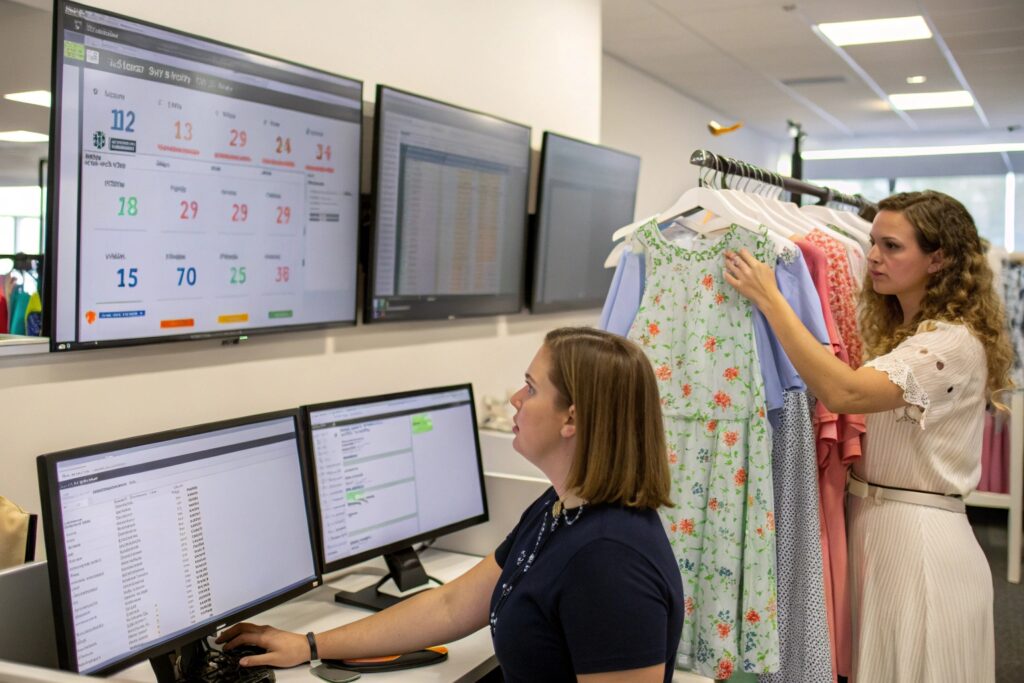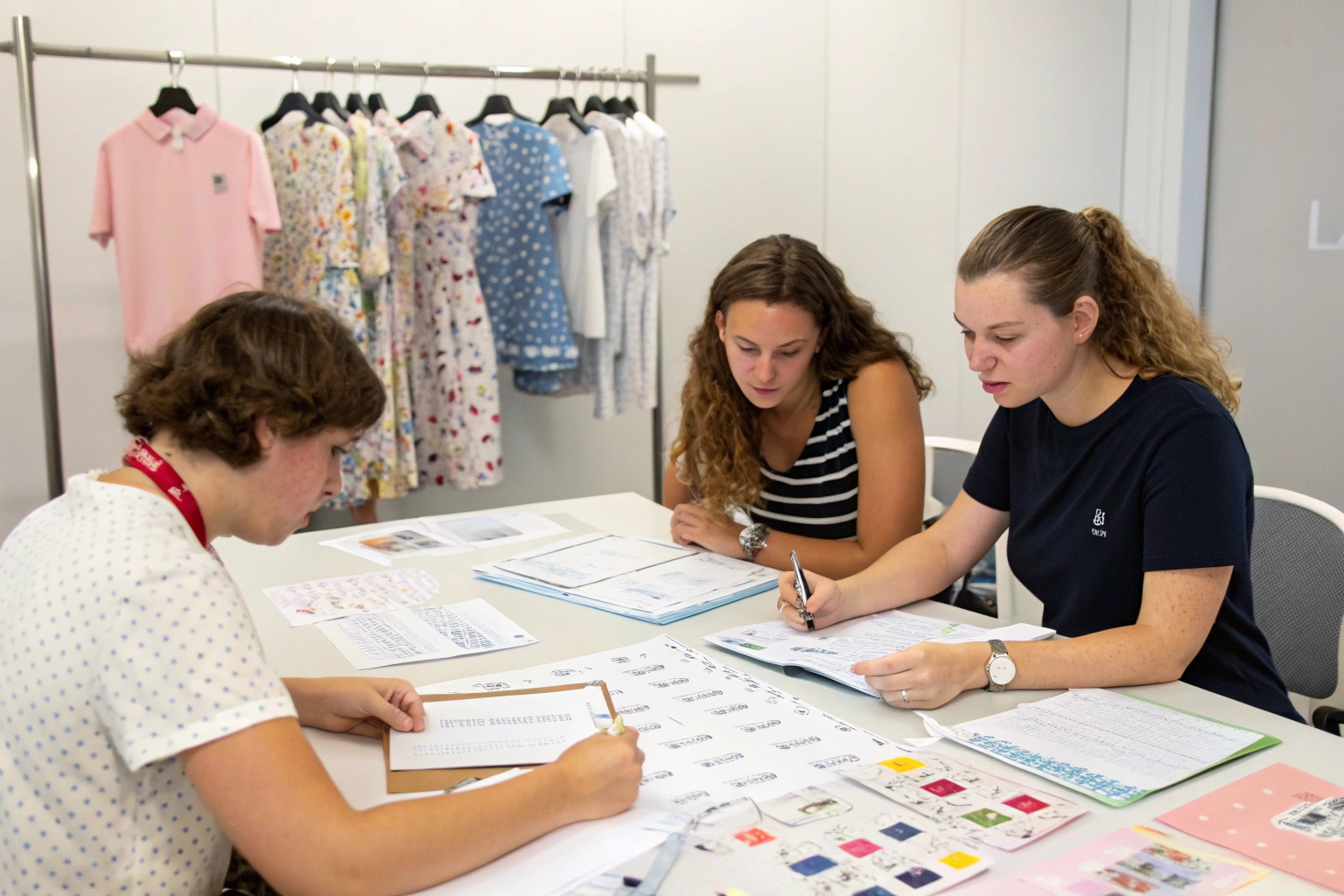Pricing a capsule wrong can cost you twice—first in profit, then in unsold stock. But with the right strategy, even a small run can deliver big returns.
Capsule orders can be priced for both agility and profitability. It starts with understanding your cost structure, your risk threshold, and your customer’s expectations.
I’ve helped many brands launch their first capsule with limited budgets. Smart pricing made the difference between cautious survival and confident growth.
Cost-Effective Pricing Strategies for Small Capsule Runs?
Small runs usually mean higher unit costs—but that doesn’t mean you have to accept thin margins.
Use cost-sharing, simplified SKUs, and smart bundling to price small capsule runs profitably without inflating retail prices.

How can brands price capsules effectively when per-unit costs are higher?
You start by controlling what you can. With small capsule runs, per-unit costs for cutting, sampling, and trims will be higher. But you can offset those by:
- Standardizing materials across styles (e.g., use the same cotton rib knit for all SKUs)
- Using digital patterns to avoid manual labor in development
- Avoiding complicated trims that require special machines or extra labor
- Bundling pieces together to raise perceived value and increase average order value (AOV)
We worked with a U.S. kidswear brand that priced a 3-piece capsule set at $59. They used the same fabric for all three SKUs, simplified tags, and achieved a 65% gross margin even with a 300-piece order per style.
What are some hidden costs that small capsule brands often overlook?
Don’t forget these:
- Sampling and size grading fees
- Freight (especially for air shipments)
- Packaging customization at low volume
- Fabric wastage, especially for bold prints or directional patterns
- Pre-production swatch testing or wash tests for new materials
At Fumao, we help buyers avoid surprises by offering a total landed cost quote before production. That includes trims, labor, and logistics so you can set prices with full clarity.
How to Set Prices Without Overcommitting Inventory?
Capsule pricing should align with your financial risk—not just your competitor’s price tag.
Set retail prices based on realistic sell-through expectations, not inflated batch sizes or unrealistic forecasts.

How do you calculate price points that allow for profit even if the capsule doesn’t fully sell?
You reverse-engineer it.
- Start with your total cost per unit, including production, packaging, and shipping.
- Estimate your realistic sell-through rate (aim for 70–80% for small runs).
- Set a target gross margin (usually 50–60%+ for DTC).
- Build in a small buffer for returns or slow-sellers.
Here’s a simple example:
| Metric | Amount |
|---|---|
| Production cost (all-in) | $9.00 |
| Target margin | 60% |
| Target retail price | $22.50 |
| Buffer for 10% return rate | Adjust final price to $24.00 |
If you price based on a full 100% sell-through but only hit 70%, your margin disappears. Build cushion into the price to reflect reality—not optimism.
What happens if your product is overpriced—and how can you correct it?
If a capsule underperforms due to pricing, first gather data: Are people abandoning carts? Are reviews mentioning value?
Rather than cutting price too quickly, try:
- Bundling slow sellers with best-sellers
- Offering free shipping for capsule purchases
- Launching a limited-time promo (e.g., "3 days only—20% off capsule")
Capsule pricing mistakes hurt less when you act fast. And if you planned your batch size conservatively, even a markdown won’t ruin your season.
Balancing Margin and Market Demand in Test Capsules?
Pricing isn’t just math—it’s a signal. And in a test capsule, that signal shapes customer expectations.
Set prices that reflect both product value and customer psychology—without compromising your cost structure.

What’s the risk of setting test capsule prices too high—or too low?
Too high, and you scare off new customers who don’t yet trust your brand. Too low, and you devalue your own work—and hurt your ability to raise prices later.
In test capsules, we recommend using value anchoring. For example:
- List a kids’ set at $49 and include the perceived value of each item (e.g., “Dress $32 + Shorts $24 + Headband $9 = $65. Bundle price: $49.”)
- Show side-by-side comparisons to similar products in larger retailers
This frames your capsule as premium but fairly priced. If you’re launching a new brand, price slightly under your eventual target to reward early adopters and generate reviews.
Fumao clients often bundle their first 3–4 capsule SKUs into a launch pack priced at 10–15% below what future collections will be. It drives trial and creates data without breaking the bank.
How do you protect long-term pricing power when testing capsules?
Even when pricing lower during tests, hold the line on perceived value:
- Use professional packaging and labeling
- Showcase high-quality photography
- Highlight “limited edition” or “first drop” language
- Avoid deep discounts or flash sales early on
You’re not just testing product—you’re establishing your brand’s price identity. Protect that.
Dynamic Pricing Models for Limited Apparel Drops?
Capsules aren’t static. Their pricing shouldn’t be either.
Use dynamic pricing tactics—based on inventory levels, time on shelf, and sell-through speed—to maximize margin and move stock.

How does dynamic pricing work in capsule retail—and when should you use it?
Dynamic pricing means adjusting your capsule price based on market behavior. For example:
- Launch Price: Full price on day one for early adopters.
- Mid-Cycle Promo: Small discount or bundle after 7–10 days if sales slow.
- Clearance Trigger: Drop price to clear final 10–15% of stock.
Here’s a sample pricing lifecycle:
| Capsule Phase | Price Strategy | Timing |
|---|---|---|
| Launch (Day 1–5) | Full Price | Build hype, maximize margin |
| Active (Day 6–14) | Bundle or discount slow SKUs | Maintain interest |
| Closeout (Day 15–30) | Targeted promo | Move remaining inventory |
We use this approach with many Fumao clients who launch seasonal or event-based kidswear capsules. When timed correctly, dynamic pricing can increase total revenue while keeping inventory moving.
What tools or systems help manage capsule pricing dynamically?
Use these:
- Shopify apps for scheduled price updates and promotions
- Klaviyo or Mailchimp for segmented email promos tied to capsule stock status
- Google Analytics + heatmaps to track pricing page bounce rates
- Inventory alerts from your ERP or warehouse team
At Fumao, we can also provide production-based lead times for restocks. That helps our clients decide whether to hold price and restock, or cut price and clear inventory.
Capsule success isn’t just about selling fast. It’s about pricing smart from day one to day thirty.
Conclusion
Capsule pricing isn’t one-size-fits-all. It’s a blend of smart math, clear strategy, and flexible execution. With the right approach, you’ll reduce risk—and raise returns—no matter how small the run.










